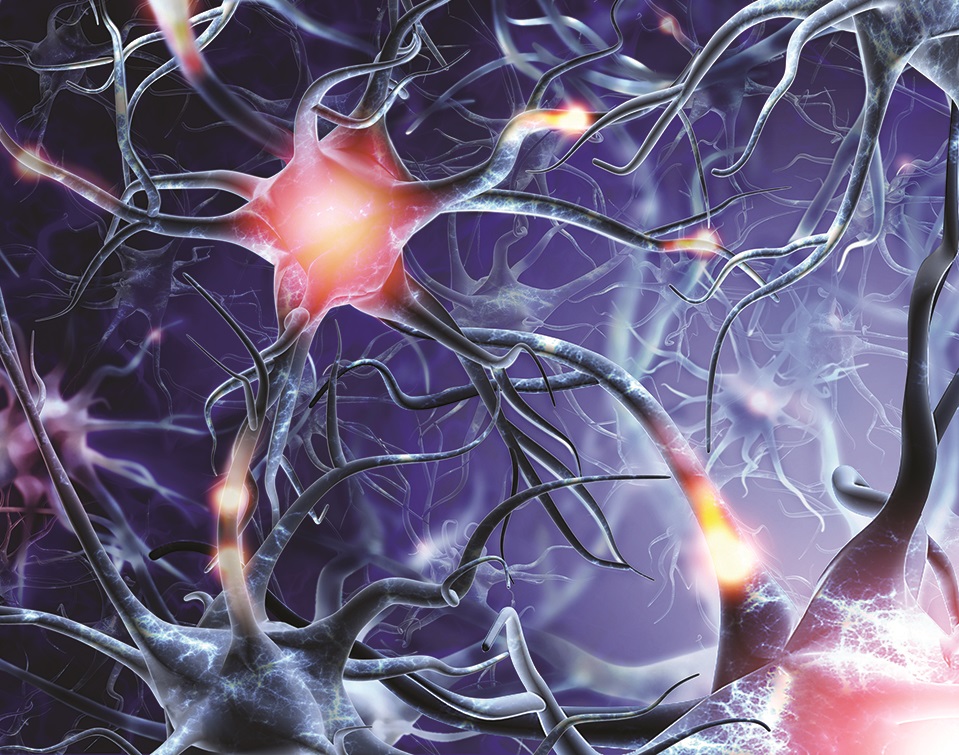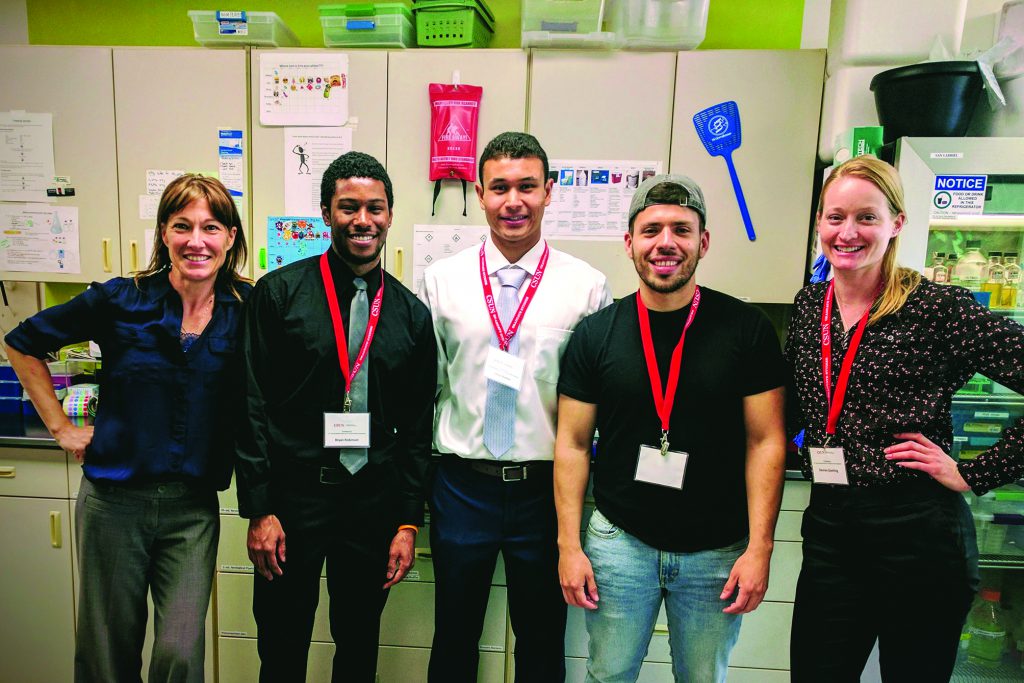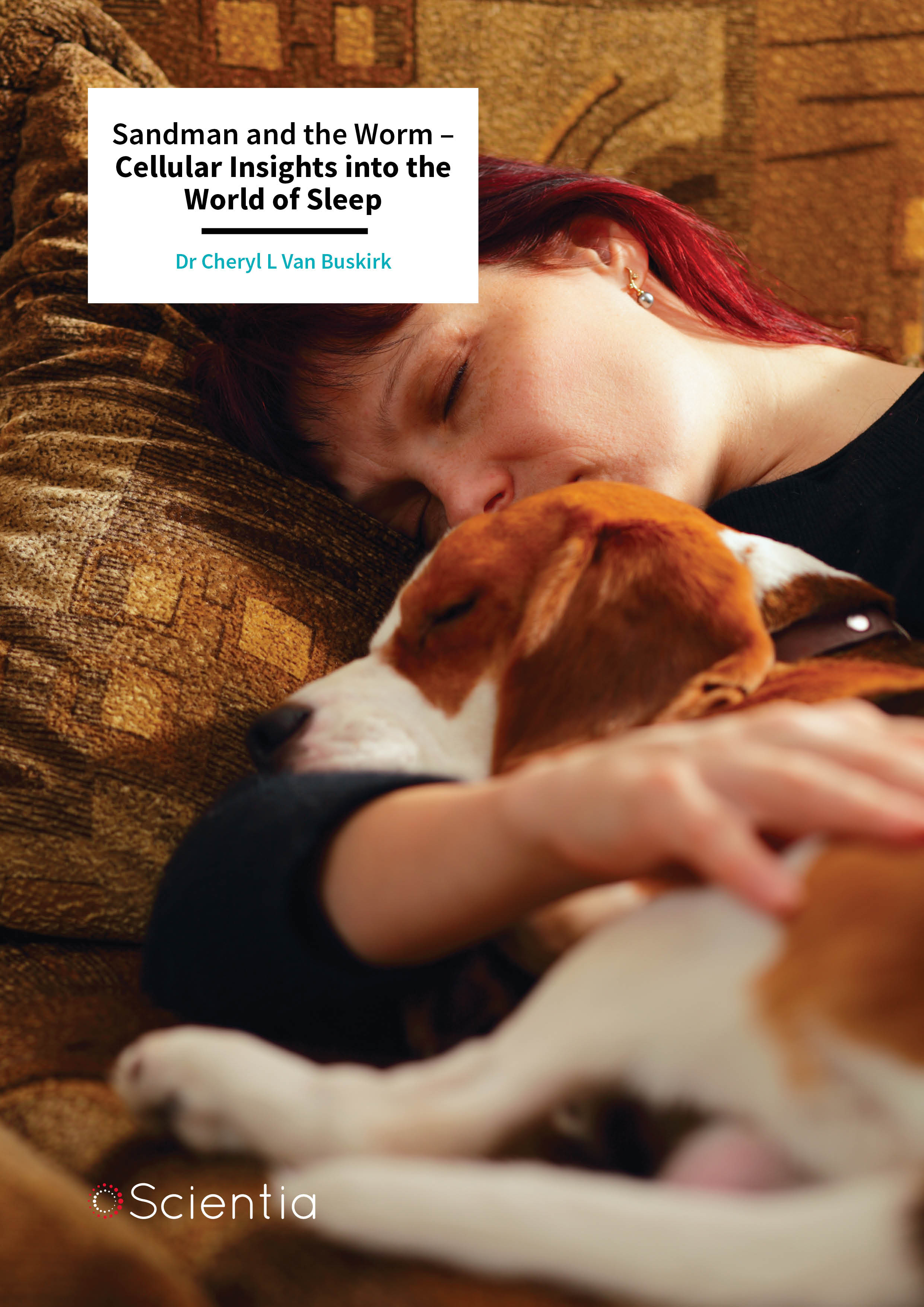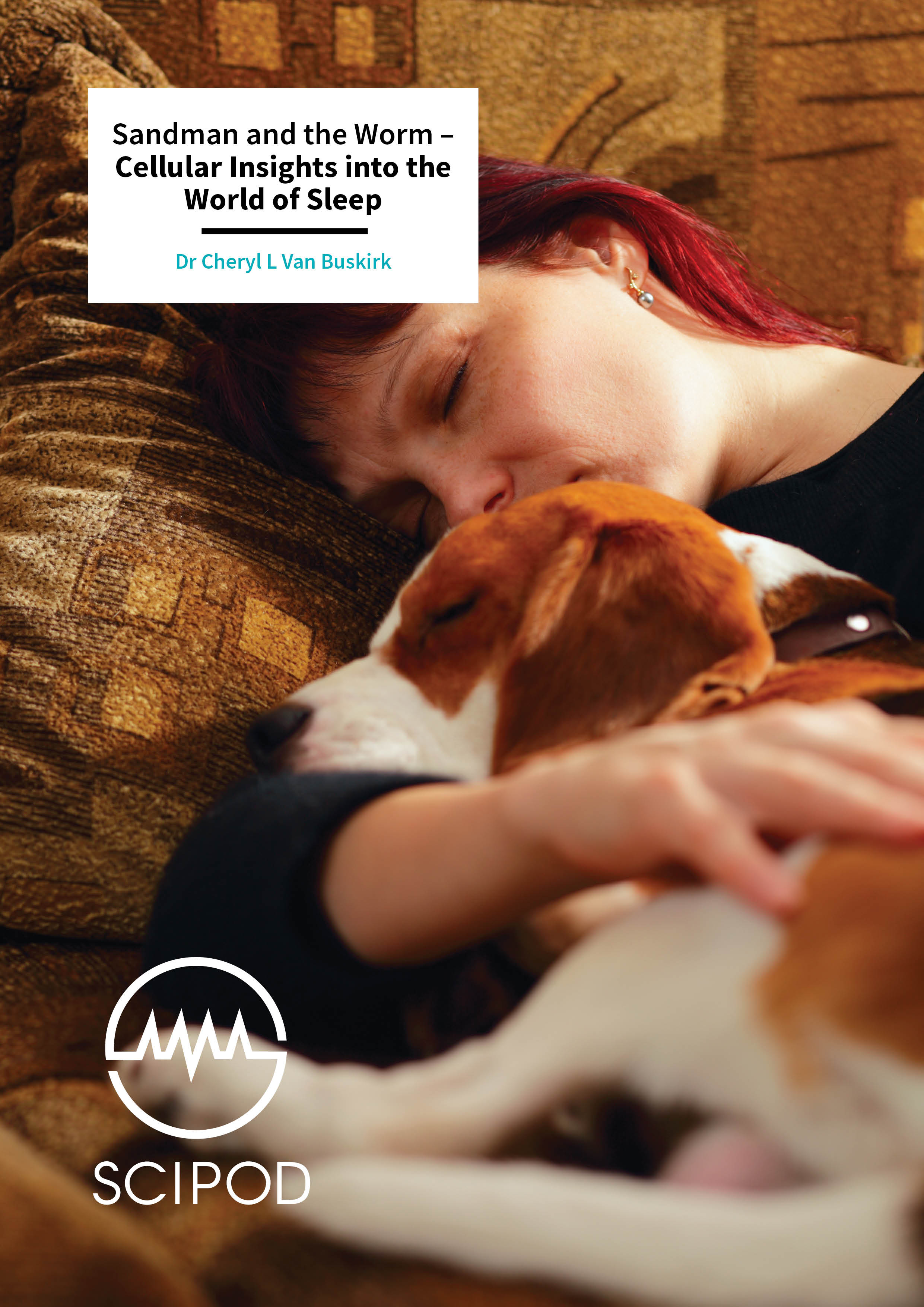Dr Cheryl Van Buskirk – Sandman and the Worm – Cellular Insights into the World of Sleep
Why we sleep is a mystery. Dr Cheryl Van Buskirk of California State University Northridge is using the simple roundworm, C. elegans, to probe the cellular basis of sleep – with implications for sleep in more complex animals – including humans.
Sleep – One of Life’s Mysteries
Whether you look forward to catching some zzzz’s each night, or see daily downtime as a necessary inconvenience, all of us must sleep. But why? The biological function of sleep still remains a mystery. Several hypotheses have been put forward, such as modulating the strength of neuronal synapses, clearance of metabolites from the brain, energy conservation and macromolecule biosynthesis. Observed perturbations in metabolic and synaptic processes lend support for these models, though none offer a complete explanation.
Sleep has a number of distinctive behavioural features, being characterised by quiescence (a period of immobility), a heightened arousal threshold (reduced responsiveness to external stimuli) and reversibility. The sensation of tiredness after a long eventful day, and the irresistible urge to drift off as the Sandman works his magic is an experience that we are all familiar with. Why we get tired after being awake for an extended period is a mystery. Sleep scientists call this ‘sleep pressure’, which is considered to build up during wakefulness and dissipate during sleep – a concept known as homeostatic regulation of sleep (or the ‘sleep homeostat’).
Homeostatic regulation, together with circadian regulation, aka the ‘body clock’ (When should we sleep?) are two major processes that regulate our slumber. While sleep’s ultimate function is unknown, it’s absolute necessity for survival is certain – for humans and other animals. The demands of modern living – devices, TV, nightlife, coffee, energy drinks and shift work – can make it difficult for us to get a good night’s rest, but adequate sleep is essential for cognitive performance, productivity, good health and wellbeing.
Sleep is ancient in origin and has been a highly conserved behaviour with evolution – attesting to its necessity. Sleep is observed in mammals, birds, reptiles, amphibians, fish, and even invertebrates, and this array of sleepers includes some organisms that are highly amenable to laboratory study and genetic analysis.
Studies with model organisms are instrumental to life sciences research – and sleep science is no exception. It is now recognised that the underlying genetic, molecular and cellular mechanisms that regulate myriad biological processes – including sleep – are evolutionarily conserved across the phylogenetic ‘tree of life’. Therefore, what is genetically and biochemically true in humans tends to be true in other animals. This homology of sleep across phylogeny enables modern sleep scientists to study sleep in fairly simple model organisms such as zebrafish (Danio rerio), fruitflies (Drosophila melanogaster) and even roundworms (Caenorhabditis elegans). At California State University Northridge (CSUN), Dr Cheryl Van Buskirk and her students are using Caenorhabditis elegans (C. elegans) to study the cellular basis of the sleep homeostat.
Opening a Can of Roundworms
Think of somnolent animals and perhaps you think of giant sloths, koalas, or your pet cat. Roundworms don’t spring to mind. In the wild, C. elegans is rather unremarkable – inhabiting temperate soil environments, especially rotting vegetation, where it feeds on bacteria. However, it is the biology of C. elegans in the petri dish that makes it a particularly suitable model organism for Dr Van Buskirk’s sleep studies. There are two sexes – male and hermaphrodite – allowing C. elegans to mate (leading to new genetic combinations) or self-fertilise (creating clones). In each case, over 200 offspring can be produced every few days. Thus, large quantities of roundworms can be cultured in petri dishes for experiments.
The worms are minute, approximately 1 mm in length, with several hundred fitting on one petri dish. The dishes are inoculated with a special growth medium – aptly called Nematode Growth Medium – and are seeded with E. coli bacteria OP50, on which the worms feed. While the human brain has an estimated 100 billion neurons (nerve cells), the ‘brain’ of C. elegans has only 302 neurons, yet this simple nervous system can nonetheless give rise to fairly complex behaviours. The entire synaptic network has been completely mapped, making C. elegans an ideal model for studying neurobiology and behaviour.

Dr Van Buskirk and her colleagues are particularly interested in the question of homeostatic control – what is behind this so-called ‘sleep pressure’ that builds up during our waking hours and makes it necessary for us to sleep? The sleep of C. elegans does not follow a day-night cycle like other animals, and this absence of circadian regulation makes them excellent subjects for investigating homeostatic control. Dr Van Buskirk’s quest into the molecular basis of sleep using C. elegans as a model began early – and she has made a number of seminal discoveries in the field of sleep research. In 2007, while she was a post-doc at Caltech, she discovered that by increasing the level of (‘overexpressing’) a protein called LIN-3, she could force her worms into a quiescent state – animals stopped feeding and moving, and this quiescence could be quickly reversed, just like sleep. This finding was interesting, because C. elegans LIN-3 is similar to a protein called epidermal growth factor (EGF) found in complex animals, including humans. EGF had been best known for its role in stimulating cell growth and differentiation, but some studies in mammals had hinted at a sleep-inducing effect.
Encouraged by this connection, Dr Van Buskirk and her colleagues investigated the mechanism underlying EGF-induced sleep. They found that by activating EGF receptors (EGFR) on a single cell – the ALA neuron – they were able to trigger sleep in C. elegans. Thus, the team identified ALA as a sleep-inducing neuron that could be activated by artificially manipulating EGF levels. The problem was, it wasn’t clear what EGF production normally responds to. That is, under what circumstances does the ALA neuron get to work its Sandman magic? Sleep-like periods of quiescence had been observed in worms prior to each larval moult, but neither EGF nor the ALA neuron appeared to play a major role in pre-moulting quiescence.
Sleeping worms
Wakeful worms
It is Dr Van Buskirk and her students’ recent studies with C. elegans at CSUN that have been particularly insightful in elucidating the function of the ALA neuron, though Dr Van Buskirk admits ‘we stumbled into it’. They noticed that if worms were exposed to noxious heat, they would stop feeding and moving, and would remain quiescent for some time, even when returned to room temperature. An undergraduate student, Andrew Hill, speculated that the ALA neuron might mediate this heat-induced quiescence, and he found that it did: mutant animals lacking an ALA neuron would not become quiescent in response to heat exposure.
In further experiments, the team exposed the worms to a greater range of damaging conditions: high salt, ethanol, cold stress, or exposure to Cry5B – a toxic protein that punches holes in the worms’ digestive tracts. Each of these stressful conditions triggered a bout of quiescence that depended on the ALA neuron. The Sandman now had more roles than they had ever imagined – it could send the worms into slumber in response to a variety of conditions that had in common the ability to cause cellular stress or damage.
Later on, the team showed that, like sleep, this quiescent state is associated with reduced responsiveness to stimuli, and importantly, is beneficial – sleepless mutants fail to recover from the damaging effects of noxious heat exposure. These studies revealed that harmful conditions can induce a protective sleep-like state in C. elegans, providing direct evidence that sleep may have evolved as a way of recovering from cellular damage.

From left to right: Dr Cheryl Van Buskirk, Bryan Robinson, Chris Makkar, Rony Soto and Desiree Goetting
Sleep as a Mechanism to Restore Cellular Homeostasis?
Any functioning cell has a lot going on. Many cell types have very specialised functions, and on top of that, they have housekeeping to do. The production of new proteins (which do the cell’s work) must be balanced with the turnover of old ones (i.e., taking out the trash), in a process known as protein homeostasis. The cell must also take care of any odd repairs that arise, including abnormally folded proteins and damage to the genome.
Neurons are highly specialised ‘excitable’ cells that are called on to integrate information from a variety of sources and quickly relay signals to appropriate targets – a relatively demanding job involving the rapid production and turnover of many proteins. We are all too familiar with what happens when we have too much going on at work – our housekeeping duties are not a priority and things start to get backed up. There is evidence that the same may be true of neurons. One sign that a cell has a backlog of housekeeping is the appearance of ‘molecular chaperones’ – a class of proteins that are specialised house-cleaners. Like a costly cleaning service, they are called under stressful conditions to help restore balance. Interestingly, chaperone levels in the brains of mammals and other animals have been found to increase with prolonged wakefulness, suggesting that the longer a brain is active, the more difficult it is to maintain homeostasis.
So, what does this have to do with C. elegans and stress-induced sleep? The conditions that trigger sleep in C. elegans disrupt cellular homeostasis. Noxious heat causes proteins to aggregate and molecular chaperones to become recruited. Cold, ethanol, and high-salt conditions are also known to disrupt protein homeostasis. UV light, recently identified as another sleep trigger in C. elegans, damages both proteins and DNA. Thus, the conditions that put a burden on a cell’s ability to maintain homeostasis can trigger sleep in worms.
Dr Van Buskirk and her team speculate that as animals evolved nervous systems with increased demand on neurons, housekeeping disruptions occurred regularly (even without external stressors), and sleep became coordinated with circadian regulation to counteract these disruptions on a daily basis. This is a speculation that awaits much testing. But for now, Dr Van Buskirk says, ‘we aim to determine the molecular mechanism by which this occurs in C. elegans.’

From left to right: Adrig Sarian, Dr Cheryl Van Buskirk and Dany Roman, at the C. elegans International Meeting
FIRE Power!
As well as culturing roundworms, Dr Van Buskirk is also passionate about training the next generation of scientists, aka CSUN undergraduate students, through her innovative approach to teaching. She has pioneered the BIOL447/L course – The Full Immersion Research Experience or FIRE – an innovative scheme that gives undergrads the experience of scientific inquiry and experimentation in a real laboratory setting. The FIRE scheme is designed to give students the opportunity for interactive, immersive, experiential learning – as well as encourage them to pursue a career in research.
Dr Van Buskirk launched FIRE in 2013, and this first cohort saw 14 undergrads gain hands-on experience in designing experiments, conducting sleep studies, analysing data and presenting findings. The FIRE students contributed significant findings to the lab’s research on stress-induced sleep. ‘The outcomes exceeded my expectations,’ admits Dr Van Buskirk. And the FIRE lab is just starting to heat up, thanks to a grant from the National Science Foundation (NSF) that provides support for the course and its integration with Dr Van Buskirk’s research program.
The FIRE lab not only generates novel insights into the genetic regulation of sleep, but it provides an opportunity for students to know the thrill of discovery – an experience that is in some cases life-changing. Several former FIRE students have gone on to pursue PhDs or other graduate programs. Whatever path the students choose to pursue, the skills gained transfer well to any career. The FIRE experience has been overwhelmingly positive – with most finding it deeply enriching and even fun! In this lab, the worms may be sleeping, but the students certainly aren’t!
Meet the researcher

Dr Cheryl L Van Buskirk
Department of Biology,
California State University Northridge
Northridge, CA
USA
Dr Cheryl L Van Buskirk is an Associate Professor at the Department of Biology, California State University Northridge (CSUN). Having graduated with a BSc in Biochemistry at the University of Calgary in 1993, and after gaining a PhD in Molecular Biology at Princeton University in 2000, she started as a postdoctoral researcher at Caltech, Pasadena. It was here that she and her mentor Dr Paul Sternberg discovered that Epidermal Growth Factor (EGF) signalling within a single neuron, ALA, triggers a sleep-like state in the C. elegans roundworm – a significant discovery. Since the identification of ALA as a sleep-inducing neuron, she has had an ongoing research interest in elucidating the molecular basis of how, and why, EGF signalling and ALA induce quiescent states in C. elegans. In 2011, she started her own lab at the CSUN Department of Biology, as an Assistant Professor. It was here that Dr Van Buskirk and her colleagues serendipitously discovered that ALA-mediated sleep is triggered by damaging conditions such as heat, and importantly, that sleep enhances recovery from this damage. These findings suggest a role for sleep in cellular repair, and potentially in the maintenance of cellular homeostasis – a function that may be deeply conserved in more complex animals such as mammals. Dr Van Buskirk is also committed to mentoring the next generation of young scientists though her pioneering ‘FIRE’ undergraduate lab immersion programme.
CONTACT
E: cheryl.vanbuskirk@csun.edu
T: (+1) 818 677 4591
W: https://www.csun.edu/faculty/profiles/cheryl.vanbuskirk
FUNDING
NSF CAREER IOS#1553673
REFERENCES
AJ Hill, R Mansfield, JM Lopez, DM Raizen, C Van Buskirk, Cellular stress induces a protective sleep-like state in C elegans, Current Biology, 2014, 24, 2399–2405.
MD Nelson, KH Lee, MA Churgin, AJ Hill, C Van Buskirk, C Fang-Yen, DM Raizen, FMRFamide-like FLP-13 neuropeptides promote quiescence following heat stress in Caenorhabditis elegans, Current Biology, 2014 24, 2406–2410.
C Van Buskirk, PW Sternberg, Epidermal growth factor signaling induces behavioral quiescence in Caenorhabditis elegans, Nature Neuroscience, 2007, 10, 1300-1307.




